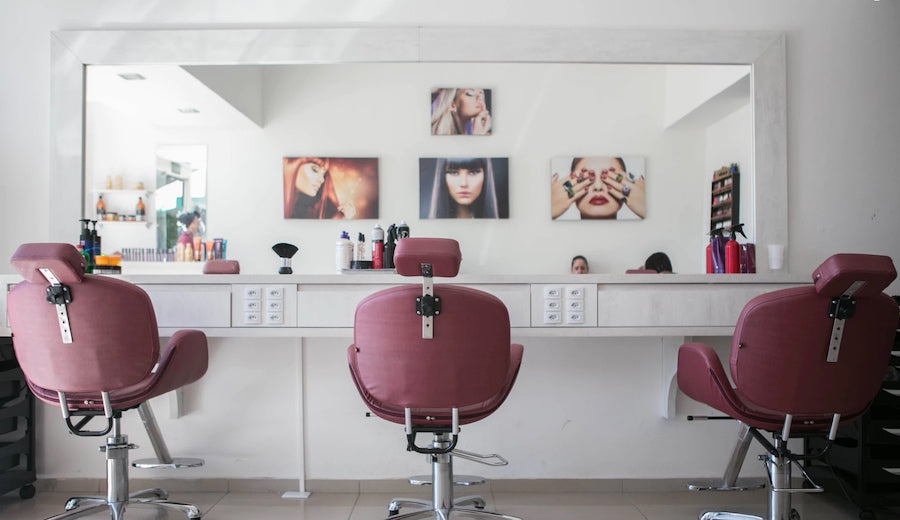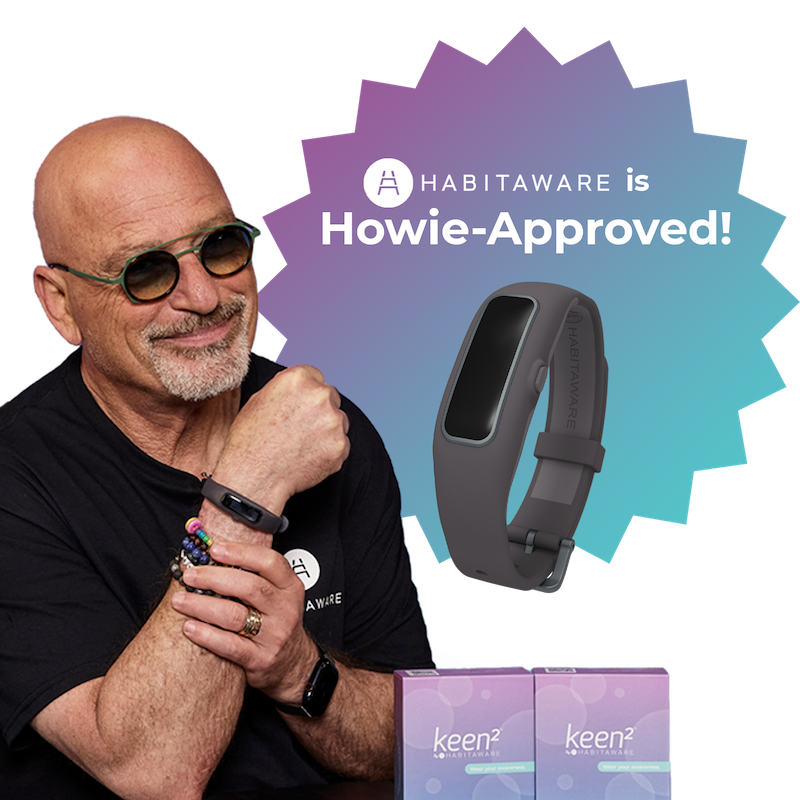My Journey From Hair-Puller to Hairstylist
by Dorin Azérad
I don’t remember a life without hair pulling.

This is the first photo of me with Trichotillomania. 4 years old. Not worried about anything but nap time, snack time, and bossing around my baby sister.
For many years, it was difficult for me to look at photos of myself as a child. I immediately remembered the tears shed after hair-pulling episodes and the frustration felt watching my hair slowly grow back. I used to let my Trichotillomania and my hair loss define the way I lived my life. It took years of pain and heartache for me to realize that there is another way.
When It Got Trichy
My journey with Trichotillomania began over 20 years ago when I started pulling out my eyelashes and eyebrows at the age of 4. A few years later, my hands moved from my eyebrows and eyelashes to my left hairline. With that, the numbers of hairs I pulled increased exponentially.
When it became clear to my parents that my hair pulling was not a phase, they found me a therapist. For the next decade, I was in a therapist's office every week counting the hairs I had pulled, talking about the different stressors that might be affecting my Trich, and coming up with every strategy imaginable to stop pulling.
Just a few years ago, if you even mentioned the word “hair” around me, I’d flinch and change the conversation. Wanting nothing more than to stop pulling, I tried everything from doctors and meds to fidget toys and hair pulling journals. Nothing worked - my bald spots only got bigger and bigger, as did the headbands and toppers I wore every day to cover up those growing spots.
When I Chose Acceptance
Slowly, I decided I no longer wanted to live my life feeling defined by my deepest, darkest secret - my Trichotillomania. My shame had grown over the years to a level of all consuming. My Trichotillomania and my hair had negatively affected the activities I chose to participate in, the people I let into my life, and worst of all, the way I thought of myself. It took years of slowly meditating on surrendering, but I eventually got to a place where I had enough. I was ready to surrender to the disorder. I was no longer going to let my disorder control me.
Today, I’m on a journey of acceptance and self-compassion; I’m learning to love my Trichotillomania, my hair (or lack thereof), and most importantly, myself. Yes, I still pull out my hair every day (actually, I haven’t had a pull-free day in years), but I’m ok with that! I no longer live my life wishing for a day without Trichotillomania, because I am learning to love myself with Trichotillomania.
When to Set Boundaries
As my journey with self-acceptance has evolved, I have learned the importance of setting boundaries. It’s just as important to give myself grace when I pull out a few hairs as it is to tell myself to stop when my pulling gets in the way of my day-to-day activities.

I created my hair-pulling toolbox to help me as I navigate these boundaries. It consists of affirmations, favorite quotes, my journal (which no longer contains the number of hairs I’ve pulled), enough fidget toys for a small army of fidgeting children, and my Keen - the awareness bracelet from HabitAware.
< See how others are taking control of nail biting, skin picking and hair pulling: Reviews from the Keen Family >
My Keen has become my go-to tool for when I’m out and about. For years, I’ve struggled with pulling out my hair when I’m in the car. Until I got my first Keen, I never was able to have strategies in my car that worked for me. I tried fidget toys and post-it notes, but nothing worked. With my Keen, I’ve finally been able to feel like I have a little more control over an area of my pulling that has been a sore-point for me for a long time.
When the Hair-Puller Became the Hair Stylist
For years, I did everything I could to avoid the hair salon. Nothing sounded worse to me than exposing all my bald spots in front of a salon of strangers.
As I embarked on my journey of acceptance, I knew I wanted to help others as they navigated their journey with Trichotillomania and hair loss. I didn’t want others to feel defined by their own experience with Trichotillomania and hair loss, the way I had felt by mine for so many years.
For me, helping others is stepping into the place where most hair-pullers dread going - the hair salon. In 2016, I quit my first job out of college working at a local museum and decided to join the beauty industry to support those with Trichotillomania and hair loss, and spread awareness about them and other hair disorders.
Today, I am a hairstylist at Élan Hair Studio, a salon specializing in hair loss solutions, in Houston, TX. Behind the chair, I strive to provide each of my clients, men and women, with a safe space to begin taking control of their hair loss journey. I also run a blog that shares tips and tricks for managing body-focused repetitive behaviors and hair loss. I love helping people accept, love, and own their personal hair story. If I can learn to love my Trichotillomania and hair loss, then so can you!
Where the Journey Is Going
My journey with Trichotillomania and hair loss has been and will continue to be one that I navigate my entire life. My hair pulling used to be my deepest, darkest secret. For years, it felt like I thought of nothing else but my hair - constantly concerned with other people noticing my bald spots or my pulling.
Over the past few years, I’ve worked to change that narrative - my hair pulling is no longer the center of my universe, but one of my many qualities that makes me unique. I don’t want others to have to struggle the way I did. I love sharing what I’ve learned with others, both as a hairstylist and a blogger. Today, I strive to be the person my younger self needed - to love and accept my hair, whether thick or thin or completely gone.
Dorin Azérad (pronounced Duh-rin) is a hair-puller and hairstylist - the Trichotillomania hairstylist - at Élan Hair Studio in Houston, TX. She wants to be that voice in your life telling you, "you're perfect just the way you are!" Learn more about Dorin at her website.



